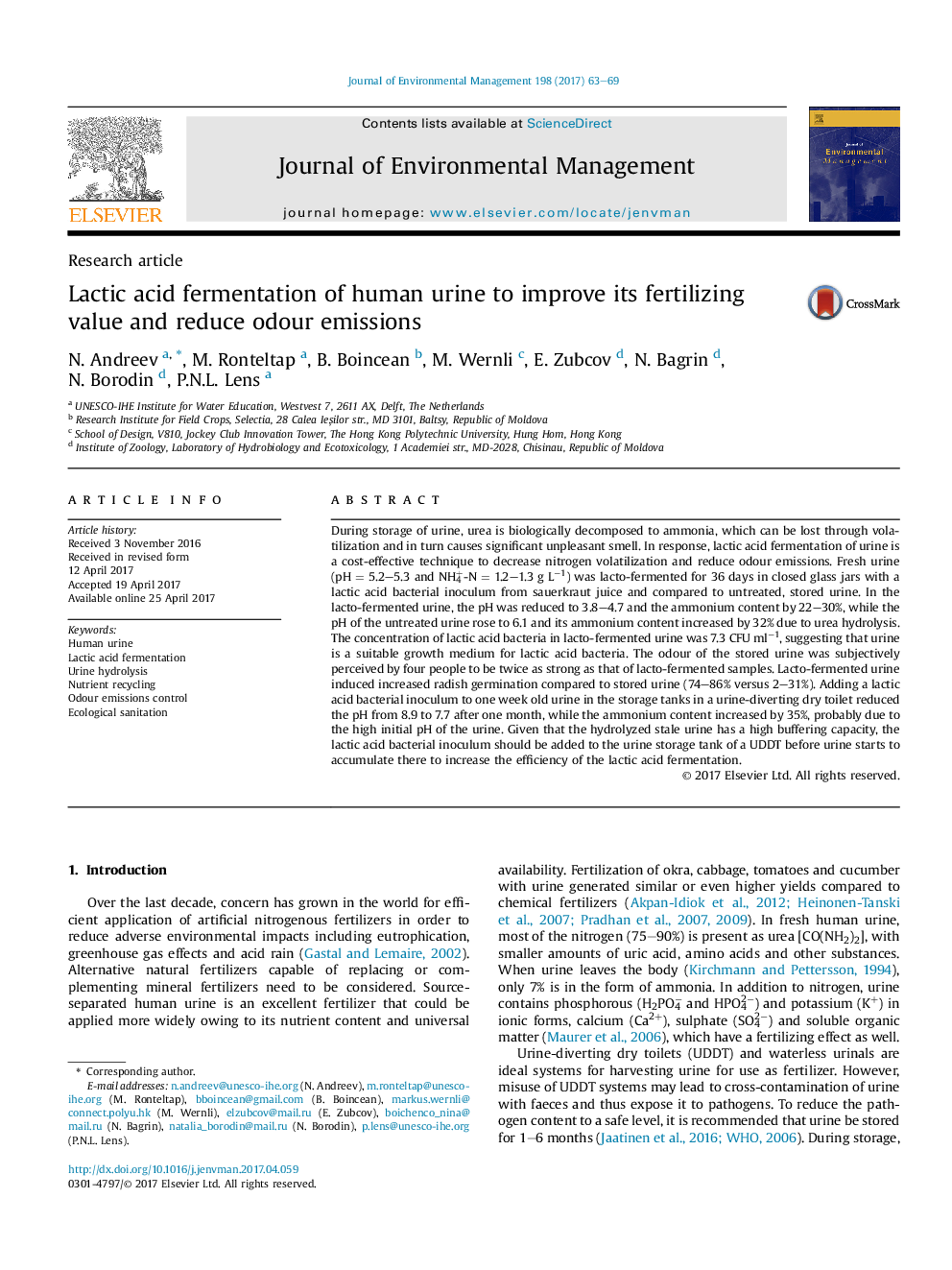| کد مقاله | کد نشریه | سال انتشار | مقاله انگلیسی | نسخه تمام متن |
|---|---|---|---|---|
| 5116729 | 1378105 | 2017 | 7 صفحه PDF | دانلود رایگان |
- Non hydrolyzed urine serves as a suitable growth medium for lactic acid bacteria.
- Lacto-fermentation reduces ammonia volatilization and odour emission in urine.
- Lacto-fermented urine has better fertilizing effect than stored urine.
During storage of urine, urea is biologically decomposed to ammonia, which can be lost through volatilization and in turn causes significant unpleasant smell. In response, lactic acid fermentation of urine is a cost-effective technique to decrease nitrogen volatilization and reduce odour emissions. Fresh urine (pH = 5.2-5.3 and NH4+-N = 1.2-1.3 g Lâ1) was lacto-fermented for 36 days in closed glass jars with a lactic acid bacterial inoculum from sauerkraut juice and compared to untreated, stored urine. In the lacto-fermented urine, the pH was reduced to 3.8-4.7 and the ammonium content by 22-30%, while the pH of the untreated urine rose to 6.1 and its ammonium content increased by 32% due to urea hydrolysis. The concentration of lactic acid bacteria in lacto-fermented urine was 7.3 CFU mlâ1, suggesting that urine is a suitable growth medium for lactic acid bacteria. The odour of the stored urine was subjectively perceived by four people to be twice as strong as that of lacto-fermented samples. Lacto-fermented urine induced increased radish germination compared to stored urine (74-86% versus 2-31%). Adding a lactic acid bacterial inoculum to one week old urine in the storage tanks in a urine-diverting dry toilet reduced the pH from 8.9 to 7.7 after one month, while the ammonium content increased by 35%, probably due to the high initial pH of the urine. Given that the hydrolyzed stale urine has a high buffering capacity, the lactic acid bacterial inoculum should be added to the urine storage tank of a UDDT before urine starts to accumulate there to increase the efficiency of the lactic acid fermentation.
222
Journal: Journal of Environmental Management - Volume 198, Part 1, 1 August 2017, Pages 63-69
